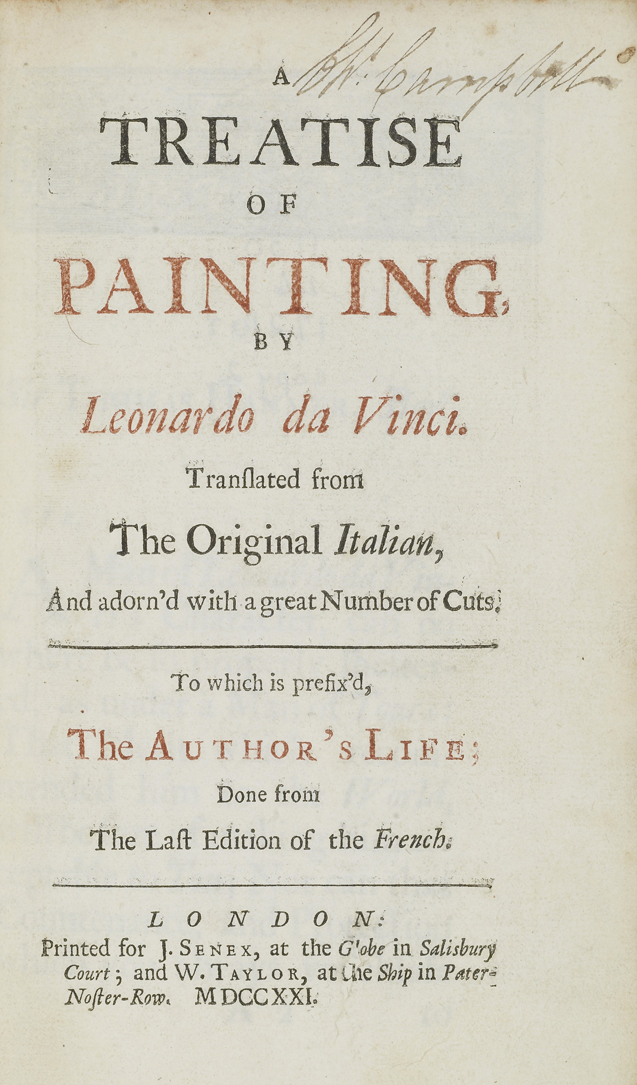
A Treatise on Painting, by Leonardo da Vinci
1721
Senex and Taylor, London
Chapter Display  |
|
Though the Mixture of Colours one with another, do almost admit of an infinite Variety, yet must it not be pass'd over without a few transient Remarks. Accordingly, in the first place, I shall lay down a certain Number of simple Colours as a Foundation; with each of these, mixing each of the Rest, one by one, afterwards two by too, and three by three, proceeding thus to an entire mixture of all the Colours together: Afterwards, I shall begin to Mingle these Colours over again, two by two, then three by three, four by four, and so to the end; upon those two Colours shall be laid three, and to these three shall be added three more, afterwards six, and so on, continuing this Mixture through all the Proportions: Now, by simple Colours, I mean such as cannot be made or supply'd out of the Mixture of any other Colours: White and Black I do not reckon among Colours, the one representing Darkness, and the other Light; that is, the one being a mere Privation of Light, and the other mere Light it self, either Original or Reflected; I shall not omit to speak of these, however, their Use being of the last Importance in Painting, which is nothing in effect, but a Composition of Lights and Shadows, that is, of Bright and Obscure. After White and Black, comes Green and Yellow, then Azure, after Tann'd or Oker, then Violet, and lastly, Red. These Eight being all the simple Colours in Nature, I now proceed to speak of their Mixture. In the first Place, mix Black and White together, then Black and Yellow, and Black and Red; afterwards Yellow and Black, Yellow and Red, &c. But, because Paper begins here to fail me (says the Author) I shall treat at large of the Mixture of Colours, in a Work by it self.